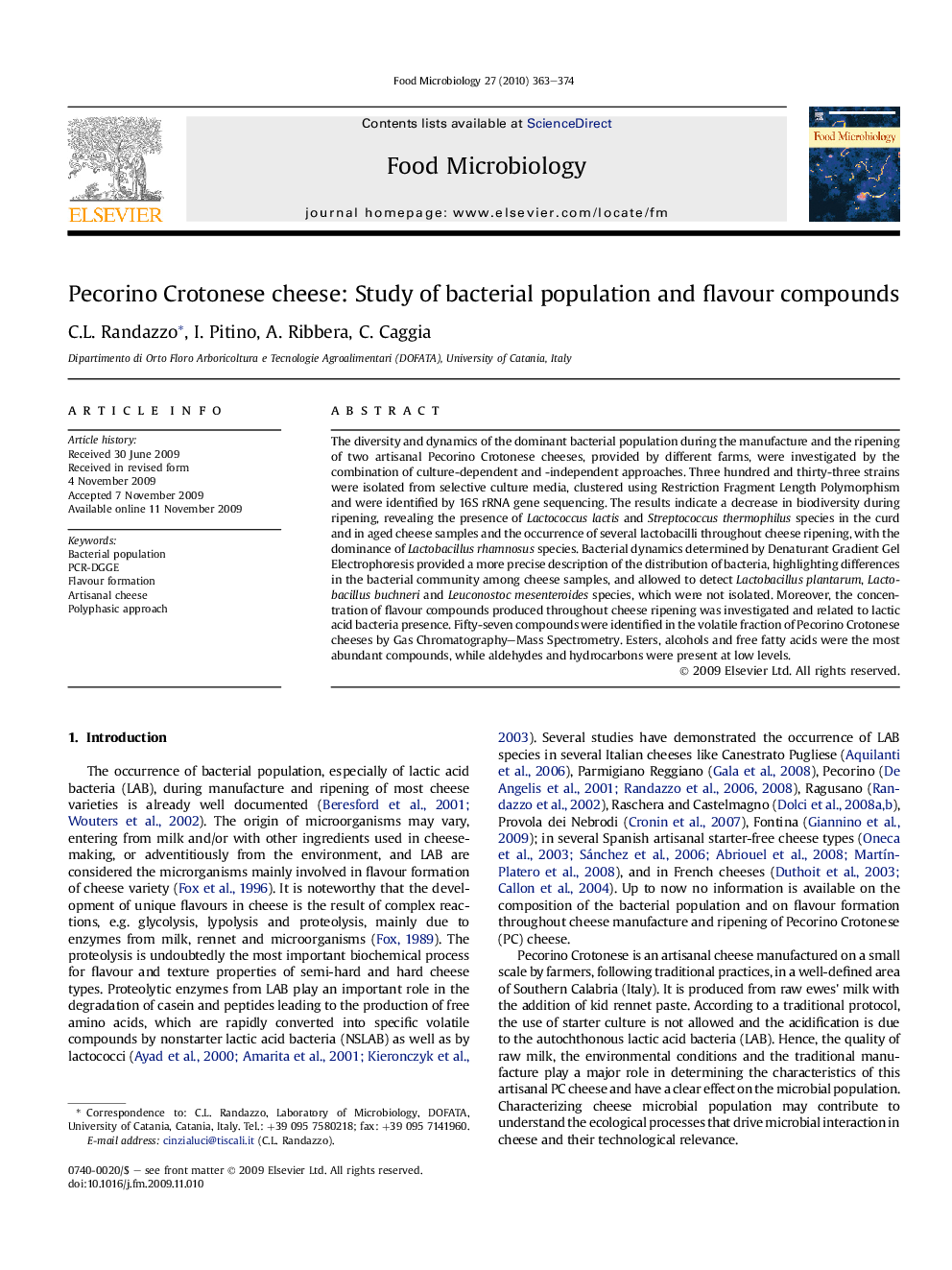| کد مقاله | کد نشریه | سال انتشار | مقاله انگلیسی | نسخه تمام متن |
|---|---|---|---|---|
| 4363424 | 1301556 | 2010 | 12 صفحه PDF | دانلود رایگان |

The diversity and dynamics of the dominant bacterial population during the manufacture and the ripening of two artisanal Pecorino Crotonese cheeses, provided by different farms, were investigated by the combination of culture-dependent and -independent approaches. Three hundred and thirty-three strains were isolated from selective culture media, clustered using Restriction Fragment Length Polymorphism and were identified by 16S rRNA gene sequencing. The results indicate a decrease in biodiversity during ripening, revealing the presence of Lactococcus lactis and Streptococcus thermophilus species in the curd and in aged cheese samples and the occurrence of several lactobacilli throughout cheese ripening, with the dominance of Lactobacillus rhamnosus species. Bacterial dynamics determined by Denaturant Gradient Gel Electrophoresis provided a more precise description of the distribution of bacteria, highlighting differences in the bacterial community among cheese samples, and allowed to detect Lactobacillus plantarum, Lactobacillus buchneri and Leuconostoc mesenteroides species, which were not isolated. Moreover, the concentration of flavour compounds produced throughout cheese ripening was investigated and related to lactic acid bacteria presence. Fifty-seven compounds were identified in the volatile fraction of Pecorino Crotonese cheeses by Gas Chromatography–Mass Spectrometry. Esters, alcohols and free fatty acids were the most abundant compounds, while aldehydes and hydrocarbons were present at low levels.
Journal: Food Microbiology - Volume 27, Issue 3, May 2010, Pages 363–374